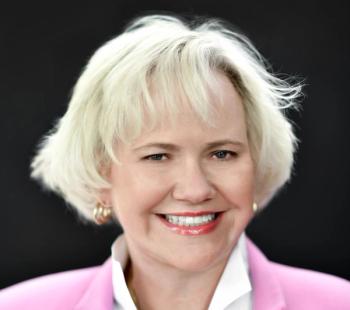
"C-Suite" Q&A: Defining Precision Medicine with Jonathan Hirsch
The "C-Suite" is in quotes because Jonathan Hirsch settles for just being the Founder and President of his company, Syapse
The “C-Suite” is in quotes because the subject of this week’s HCA News C-Suite Q&A doesn’t have a “C” in his title. Instead, Jonathan Hirsch settles for just being the Founder and President of Syapse, an innovative company in the precision medicine space.
Following a panel appearance at MedCity CONVERGE in Philadelphia last month, Hirsch took the time to answer questions about his company and views. The conversation also dove into a recurring Healthcare Analytics News theme, in which an expert is asked to define a buzzword associated with their company’s work. This is the first section of a ranging multi-part interview that will be posted throughout the week.
I am a neuroscientist by background, though I abandoned that long ago. I went to grad school at Stanford, dropped out, and started Syapse. That was back in 2008. We’re based in San Francisco, we just moved from Palo Alto two months ago, and we’re at somewhere around 110 employees right now. For a company that started in my dorm room at Stanford, it’s pretty gratifying to see all the people that we have here.
We’re focused on the clinical implementation of precision medicine, specifically in oncology. What that means is that we work with healthcare provider organizations, so hospitals, health systems and cancer centers, and we provide them with the software framework to help them clinically deliver precision oncology.
The software that we deliver to these systems does 4 primary things. The first is integrating clinical and molecular data, so that the oncologist has a full picture of their patient. The second is providing decision support at point-of-care, so that the physician can understand what the best testing and treatment options are for the patient. The third is streamlining clinical workflows around precision medicine, so for example focusing on things like the molecular tumor board and how we provide software to help automate and streamline that process.
The fourth part, which is probably the most exciting area that we work on, is the learning help network, so taking the health systems we work with and enabling them to track outcomes on all their patients at scale, and enabling that real world evidence to be shared across the health system so that a physician in Detroit or in Wisconsin can take their patient and contextualize them against the whole evidence base to figure out the right treatment plan based on the experiences of patients across the country.
We’re pretty lucky that we work with a lot of leading health systems across the country, so everyone from academic medical centers like Stanford, UCSF, and University of Miami to large community systems like Providence and Aurora, to integrated systems like Intermountain and Henry Ford.
How was the process of starting a company like this, and what are the challenges of building something from scratch to enter a pretty complex field?
In the early days, there were at least two challenges that we were dealing with. One was that precision medicine at the time was kind of this immature area, and it was largely in the translational research arena in 2008/2009/2010. Precision medicine wasn’t really ready for primetime yet, it was the early stages for this field. That was certainly a challenge, when you’re out in front of the industry by a number of years and really looking to push forward the whole oncology industry.
The second area that was challenging was that at the time, we were a health IT company before there were really startup health IT companies successfully selling to large hospitals and health systems. We were one of the first really startup companies starting from scratch with no prior industry background. We were one of the earlier ones that was going and selling to health systems.
We had those two core challenges to deal with. In the early days of the company it was really all about finding the critical need and the critical sets of problems that physicians had, and that could be solved through technology. It took a while of iterating on that, and a couple of years to figure out what those core problems were that you could solve, that were big enough problems to cause hospitals and health systems to partner with, at the time, a very small company. Also, finding problems that were tractable enough and clinical enough in nature to really enable us to have an impact.
Those prophecies are some of the core ones we still focus on today. One of those was the molecular tumor board. Way back in the early days of the company, we zeroed in on that as this new process for figuring out treatments for patients. It was multi-disciplinary in nature, so many different physicians were involved, it required a lot of data, the knowledge from that process was often lost because people were using Powerpoint and Excel spreadsheets. Nothing was really systematized at all, so that was an example of a process that we could focus in on in the early days that allowed us to build a solution, add value, and get to scale.
The second area that was a big focus for us was on the data sharing side. That was another one of the early things that we focused on. We noticed that, in precision medicine, you need bigger and bigger patient populations to really make a difference in the field. We noticed the barriers, both technological as well as perhaps political, to organizations sharing real world data with each other. We focused in on that as a core issue that again allowed us to build a solution.
After those two, then you get into all of the fun issues that come with working with health systems, like buying cycles and celling cycles, privacy, cloud computing…I think we were one of the first organizations that had a BAA in place with Amazon Web Services and was providing cloud computing-based clinical applications to large health systems. I think we were one of the early ones to do that.
We’ve fought a lot of battles and pioneered a lot over the last few years, and now largely those items are behind us and behind the industry. Cloud computing is accepted, precision medicine is a clinical reality, and there’s a recognition that the big software companies out there aren’t going to provide the solution to every problem, and in fact it’s more risky to buy from the big guys than the small ones in many ways. There’s been a real sea change over the past 3 to 4 years both from the health IT side as well as from the precision medicine side.
Grasping onto precision medicine for a moment, something we like to do is to ask people in this field what terms like this mean. They often times just become headers or buzzwords. So, in your mind, what do you specifically mean when you say “precision medicine”?
That’s a good one, and that’s something that we ask people all the time too. Just taking the historical perspective, I think again that we were one of the early ones to start using that term, certainly before President Obama
We define it as enabling the physician in a real, clinical practice to use both the molecular data and the clinical data about a patient to direct a therapeutic strategy tailored to that unique clinical and molecular profile. It’s not to say that it’s genetics and genetics alone: there are many places where genetics may not be the predominant factor. It’s a recognition that, in order to move to a better treatment paradigm for oncology, we need to use all of the available data about the patient to personalize treatment to them.
I’ll give you a fundamental example. In the old world of care, which was observational in nature, people would take a patient and go ‘anatomically, they have breast cancer, therefore we’re going to apply the breast cancer pathway to that patient, and we’re going to treat every breast cancer patient the same at the start of the pathway, and we’re going to walk them through it.’
Precision medicine takes what I would say is the opposite approach, which is to forget about the fact that the tumor manifests in the breast, that’s its anatomical location. Let’s characterize that tumor, both based on the anatomical location as well as with the molecular factors, and it may be that that breast cancer acts more like colorectal cancer in another patient, and let’s treat the patient accordingly. Let’s not impose these rigorous definitions on characterization of disease based on anatomical factors.
To me, that’s the essence of precision medicine. It’s redefining practice and redefining our treatment strategies by using all available molecular and clinical data to direct those treatment strategies.
Let’s drill into the nitty-gritty of precision medicine for a bit if we could. Can you specifically detail what actionable materials you’re able to provide to physicians?
I would say there are a few areas where the physician really needs help. The first area is when to test patients and what type of testing to do. You basically have this explosion in different types of molecular testing: genetic, genomic, proteomic, transcriptomic, immunomic…and physicians just aren’t armed to make these determinations about when to do testing at all, and what type they need to do.
Right now even the simplest testing, like doing HER2 testing for breast cancer patients, you would think there’d be 100% concordance with that, or 100% utilization for that, and there isn’t. I haven’t got the latest stats, but it’s nowhere near 100%. Expecting a physician to stay educated on that area alone is just not possible.
On the second front, once a test has been ordered and the results are back, most physicians were trained before molecular data was really used in patient care. If you just look at the average oncologist, they graduated medical school even before BRCA1 and 2 were first found in the ‘90’s. Expecting a physician to be able to take a molecular test report, understand what they’re seeing, and figure out a treatment strategy, whether it’s a drug or clinical trial, that’s a tough ask.
What we do is we focus on those two specific areas, in helping physicians make decisions: what test to order when and how to use those results to pick an appropriate therapy. On both of those fronts, it’s a combination of leveraging the established industry knowledge, leveraging the expertise of the physicians that our in our health system customer base, and leveraging the real-world experience of the patients who have been run through our software in order to bring those insights back to the physician. If a physician is sitting there and has never seen a specific combination of tumor type and molecular data, the physician can just access a big database of patients who are clinically and molecularly similar and they can see what type of testing was done on those patients, what treatments were received, and what the outcomes were.






















































































